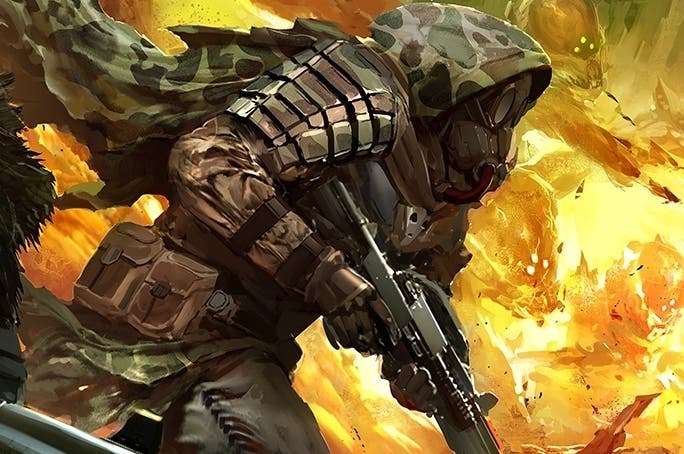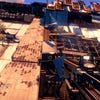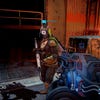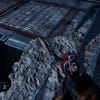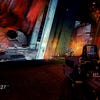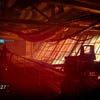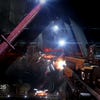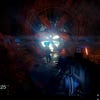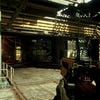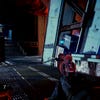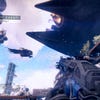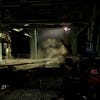Tech Analysis: Destiny
Digital Foundry's E3 assessment of Bungie's next-gen debut.
While Killzone: Shadow Fall and Infamous: Second Son led the charge for PlayStation 4 at this year's E3, the gameplay reveal of Bungie's brand new sci-fi shooter, Destiny, was one of the main high points in Sony's press conference. This mega-budget multi-platform title aims to redefine the FPS genre through the introduction of a persistent open world, where the line between campaign and multiplayer blurs into a single, cohesive gameplay experience. Destiny has the next-gen graphical bells and whistles we expect, but it's the scale and scope of the core MMO-meets-FPS concept that truly sets it apart from the competition.
Destiny is set to arrive simultaneously on four different platforms: Xbox 360, PlayStation 3, Xbox One and PS4 - all developed in-house at Bungie, each with its own dedicated online infrastructure. It's a mammoth undertaking for a team used to focusing on just one title on a single format, but the game is being built on technology that is scalable, meaning that the level of detail, effects work, physics and other subsystems can easily be pared down to work on a range of hardware configurations, simplifying the conversion process. But it's PlayStation 4 that was chosen as the host platform for the title's E3 debut, giving us a glimpse of what to expect from this new and exciting universe in its next-gen iteration.
The opening few moments of the demo reveal a vast landscape that stretches for miles into the distance, packed with intricate details from grassy fields that sway in the wind to burnt-out cars and wreckage strewn across the environment. As the camera slowly pans across the scenery, the sheer sense of scale is finally revealed: towering above the player, a massive wall separates the city of Old Russia from the desolate wasteland beyond. Water splashes down from cracks in the wall, while futuristic communication towers reach up into the sky from the other side, emphasising the game's mammoth draw distance. It's classic Bungie - albeit with a next-gen lick of paint and a grittier change in tone.
"Destiny's image quality is impressive, presenting itself at full 1080p resolution with what looks like a form of post-process anti-aliasing in effect."
The developer's artwork is as distinctive as ever, now enhanced with a level of intricacy not possible on current-gen systems. Texture detail is precise and detail-packed and artwork appears clear and crisp. The close-up detail on some surfaces is good enough to suggest that Bungie is utilising tessellation - the process of dynamically generating new geometry the closer you get to an object - although this treatment seemingly isn't given to the characters, which appear to feature relatively low polygon counts in comparison to other top-tier titles like Call of Duty: Ghosts and Crysis 3. Overall image quality is impressive, though, with Destiny presenting itself at full 1080p with what looks like a form of post-process anti-aliasing in effect, giving the game a crisp but smooth look that is betrayed only by the way of some very small sub-pixel elements of the scene that lightly shimmer in the distance.
After a short opening that introduces us to the post-apocalyptic setting, a ship passes overhead and a new character is beamed down onto the environment. As they head towards the walled city we see the use of advanced cloth physics on the characters' apparel and on the canvas covering one of the rusting vehicles nearby as the wind hits them. The surrounding landscape and characters are also nicely reflected in real time on the stagnant pools of water on the ground.
Bungie states that the vast environments on show in the E3 stage demo will be fully explorable in the final game, with the option for players to venture far away from the ruins of Old Russia and into a wider world populated by others. The idea is that people will be able drop in and out at any time when playing alone or with others, with transitions between players leaving and entering the game world handled seamlessly across both the campaign and multiplayer-focused parts of the game, blurring the distinction between shooter and MMO. There's no in-game lobby as such, with matchmaking carried out on the fly.
Heading inside the giant complex which separates Old Russia from the outside world, Bungie's lighting and effects work stands out, setting the tone for the dimly lit rooms within the structure: dust particles flow through the air, changes in exposure and bloom occur as players move through various locations that feature differing lighting conditions, and these elements are joined by the subtle use of lens flare and light shafts. At one point, the player activates a probe which partially lights up the nearly pitch-black surroundings, casting dynamic soft shadows across the environment as it ventures deeper into the complex. Moments later, the power is turned back on, illuminating the entire area with pockets of direct and ambient light sources. Impressively, global illumination appears to be in play here, with environmental light being accurately reflected of various surfaces, bringing an extra layer of ambience and depth to this location.
"Dust particles flow through the air, changes in exposure and bloom occur as players move through various locations, and these elements are joined by the subtle use of lens flare and light-shafts."
Shortly afterwards, a colourful fire-fight ensues against several regular enemies (the so-called "Fallen") and a larger, more powerful foe, revealing familiar gameplay traits along with a glimpse of Destiny's weapon upgrade and loot system. Combat appears smooth and quite Halo-like with regards to the way weapons move when aimed and how enemies react to gunfire. This becomes apparent during the first encounter with the Fallen while still deep inside the wall complex: Bungie's preference for having players shoot from the hip is clearly evident, although you are now given the ability to look through iron sights, similar to most other popular shooters.
The smoothness and intensity of the combat also leads to some visually pleasing effects when enemies are shot and killed. Physics-based particles are realistically animated, while projectile attacks cast dynamic light sources onto their surroundings. Smoke, fire and contact flash effects are also in effect. These elements appear to be rendered using non-volumetric alpha (transparent) sprites which are filtered and blended. These may lack the same level of depth found in similar effects seen in the likes of Killzone: Shadow Fall and Crysis 3, but they are still aesthetically pleasing.
A little further into the demo, a "public event" - in effect, a shared multiplayer action set-piece - also showcases Bungie's trademark approach to large-scale encounters: set outside in an open location in the demo, Fallen dropships collide with parts of the city in the distance, causing some structures to collapse, before unleashing a group of enemies and vehicles upon the player. It all looks and feels very much like a scene from Halo, but in a world where the battlefield is open to other people who are in the same in-game location.
These public events are one of the most intriguing aspects of Destiny's gameplay, and offer a diverse range of challenges. They're purely optional and players can choose whether to skip them, or alternatively spend their time playing almost nothing else. Similarly, it will be possible to go it alone throughout Destiny without needing to hook up with other people, although Bungie is confident that interaction with other players positively enhances the gameplay experience to the extent that players will rarely want to take the solo option.
"Bungie's view of the future of gaming isn't just prettier visuals and larger environments, but in giving players freedom to experiment and to carve their own path through Destiny's universe."
Destiny's focus on realising a persistent online world is frequently touched upon in the demo, and forms a central part of the glue that holds the game together. On a technical level, certain features - such as matchmaking and syncing of the game world between players - are handled server-side, instead of using the peer-to-peer model currently adopted by most shooters on the current-gen platforms.
Given that maintaining a persistent world requires immense number-crunching when processing the movements of thousands of players, it makes sense to offload this kind of workload to the cloud since the game has be permanently online to function. Having dedicated servers also has other benefits, such as the ability to handle many more players in a single game instance, along with improved security to limit potential exploits by would-be hackers. In this respect Destiny's online infrastructure is perhaps more like that of an MMO as opposed to a large-scale military shooter like Battlefield.
The brief E3 gameplay reveal for Destiny gives us a clear indication of the kind of experience Bungie is aiming to deliver. The comparisons with Halo are obvious, but at the same time the developer's vision here is much grander in nature. Bungie's view of the future of gaming isn't just about prettier visuals and larger environments - although those aspects clearly play a significant role - but in giving players freedom to experiment and to carve out their own path through Destiny's universe.
The idea of seamlessly blending campaign and multiplayer gameplay together in a persistent online world could very well inject the tired sci-fi shooter genre with a new lease of life, by fusing both fresh and familiar elements together in a way that we've not seen before in a console title. It's very much a next-gen take on an established gaming staple, and we can't help but wonder to what extent the grandeur of the finished game will scale down to the current-gen platforms.
